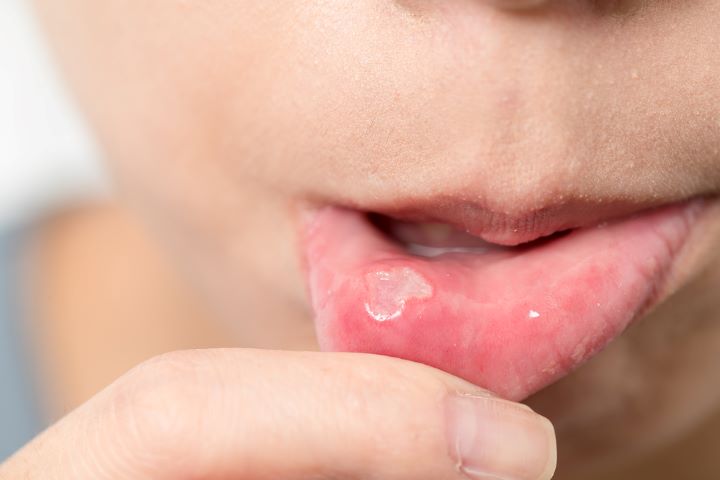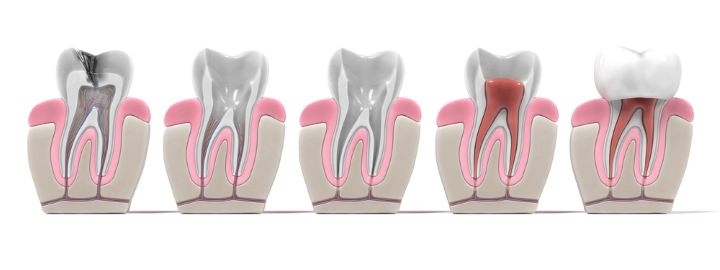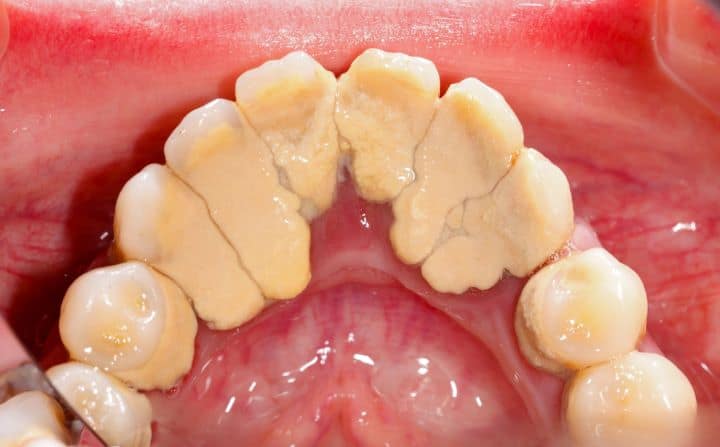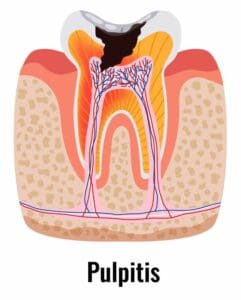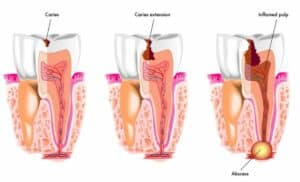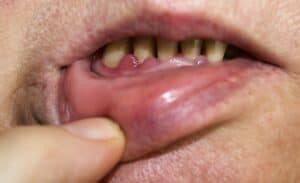Sometimes despite our best efforts, teeth cannot be saved and must be extracted.

When you have a tooth extracted, the tooth and its root are both removed from the mouth. The term “pulling” is sometimes used to describe this procedure.
Dental extractions may be either simple or surgical.
Types of Dental Extraction
Simple extraction
When a tooth’s crown is completely exposed, a straightforward extraction may be done.
An area of the mouth is numbed using a local anesthetic, and then the tooth is extracted. Loosening the tooth and then removing it from the socket is the standard approach for simple tooth extraction.
Surgical extraction
When a tooth has to be removed surgically, the dentist will make a tiny cut in the gum and, depending on the situation, may need to remove some gum tissue or even bone.
This dental operation may be performed while you are under the influence of anesthesia, so you won’t feel a thing. If a wisdom tooth is impacted, it usually must be removed surgically.
Who performs tooth extractions?

Tooth extractions may be performed by dentists and certain dental specialists, such as periodontitis oral surgeons.
Extractions are a common procedure for general dentists, but oral surgeons and periodontitis are often consulted for more complicated situations.
The dentist will examine the tooth and the gums around it to determine the extent of the damage. Dental X-rays are used by your dentist to assess bone loss and injury.
Do not forget to mention to your dentist every piece of medication, vitamins, or supplement you are currently taking. After a thorough evaluation, your doctor will go through your treatment and medication choices with you in detail.
What occurs when a tooth is pulled?
Your tooth and the area around it will first be numbed using a local anesthetic. The dentist will use special tools to remove your tooth and then delicately remove it from its socket.
In certain cases, your dentist may need to create cuts in your gums to access your tooth, particularly if it is severely decayed or has gone off at the gum line.
After a tooth has been extracted, the empty socket must be cleansed and disinfected. A dental bone transplant is another option, used to stop jaw bone loss that your dentist may use. At last, stitches may be used to help in the healing process.
What happens after a tooth extraction?
After the surgical procedure, your dentist will put gauze over the extraction site and advise you to apply consistent, firm pressure to reduce bleeding. This reduces the bleeding rate and facilitates clot formation.
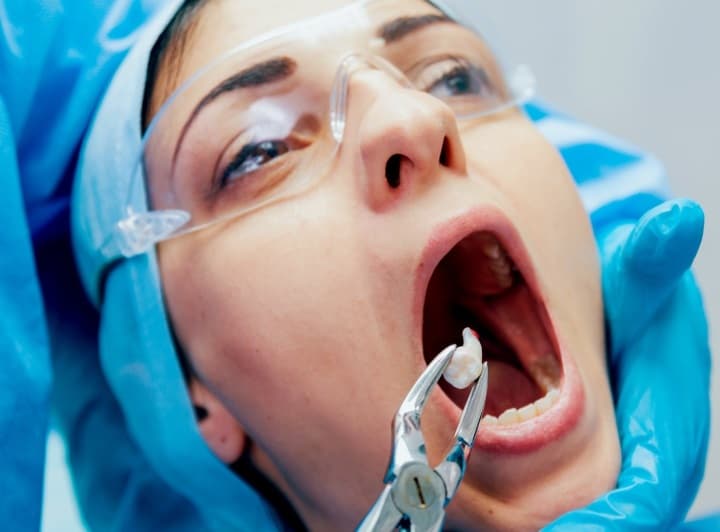
(Blood clot formation is a normal component of the recovery process. It aids in recovery and lessens the possibility of dry sockets.
Once the bleeding has decreased to a manageable level, you will remove the gauze. During the first 24 hours, you may have some minor bleeding, depending on the type of tooth removed.
Why pulling a tooth is necessary?
In most cases, dentists and other medical professionals try to preserve a patient’s original teeth. However, there are situations when traditional restorative procedures, like tooth fillings or dental crowns, aren’t sufficient.
When a tooth is too seriously injured for treatment, extraction may be the only option. The following conditions may prompt your dentist to suggest tooth extraction:
Overcrowding
Overcrowding: To correct the other teeth and allow space for them to shift into their proper positions, it may be necessary to extract a tooth (or several teeth) during orthodontic treatment.
Tooth decay

The construction of plaque promotes tooth decay. The teeth’s coating is weakened and eventually eroded by these deposits.
Infection, which causes severe pain, swelling, and redness, might set in if the disease worsens sufficiently. When a tooth has reached severe tooth decay, it may be best to have it extracted and replaced with a dental bridge.
Need to replace
Damage to a tooth that cannot be filled or restored may mean that tooth extraction may be necessary. Either a dental bridge or an implant might be used to restore the missing tooth.
Wisdom Teeth Impaction
The majority of tooth extractions are done to remove wisdom teeth that have become impacted. Teeth that are partially or completely trapped behind the gums are said to be impacted.
In the case of fully impacted wisdom teeth, the molars never emerge through the gums and may even be stretched out horizontally.
When a wisdom tooth has only partly erupted through the gums, it is said to be “partially impacted.” Both situations often need to have the wisdom teeth surgically removed.
Gum disease
If gum disease is not treated, it may spread to the supporting tissues and bones of a tooth, causing infection and eventual loss of the tooth.
Teeth may become loose or diseased when gum or periodontal disease reaches a late stage. Tooth extraction or even tooth loss may be necessary if gum disease progresses to an advanced stage.
What are the pros and cons of removing a tooth?

The pros of tooth extraction
The following advantages should be at the top of a patient’s list of factors to think about before choosing tooth extraction:
Smile improvement
Some individuals have congested teeth that make their smile seem unpleasant. Having a tooth or teeth extracted helps the back teeth to be more aligned, enhancing your smile and enabling the teeth to function effectively while biting and eating.
Problems in the future may be prevented
When the dentist analyses the damaged tooth and finds that it is likely to create further complications in the future, they will propose a tooth extraction.
If a patient has a negative outlook on a tooth, they should consider having it extracted to save the expenditures and complications that would arise in the following months otherwise.
To avoid future dental problems, treatments like having your wisdom teeth removed are available.
Efficiency in terms of cost
Extracting a troublesome tooth is often less costly than trying to save it. For example, a tooth extraction frequently charges greater than a root canal. Make sure that undergoing a root canal does not ensure that there will not be other issues with that tooth.
Additional options
After a tooth is extracted, the patient has additional options regarding the use of the empty socket. A dental implant, dental bridge, or removable partial denture might be their replacement of choice.
The cons of pulling a tooth
To make a well-informed choice, it’s vital to think about the drawbacks of tooth extraction. Some potential drawbacks to the operation are listed below.
Negative impact on surrounding teeth
When teeth are removed, especially surgically, there is a significant chance that the surrounding teeth may suffer damage.
Extraction instruments, for instance, have been known to damage neighboring teeth.
The jawbone that supports the surrounding teeth might be affected as well, leading the underneath teeth to loosen over time. Even though the dentist will take every precaution to minimize the possibility of problems, they are nevertheless possible.
High replacement costs
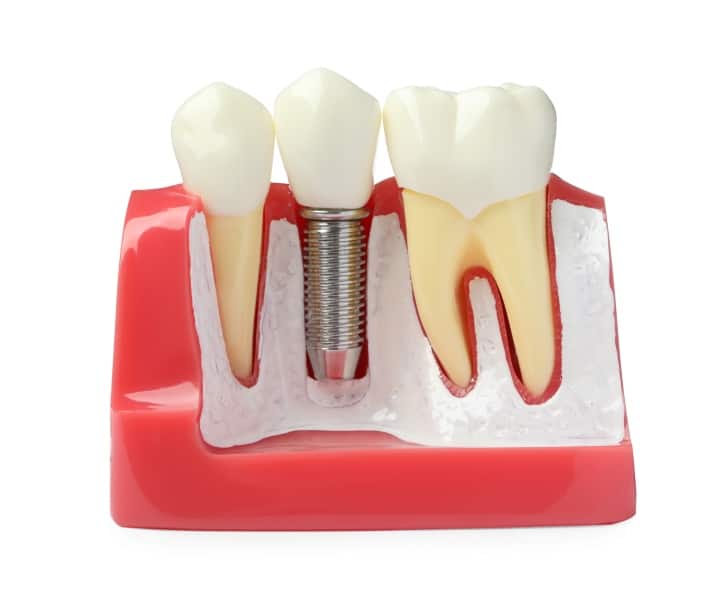
Tooth replacements may be somewhat pricey, depending on the patient’s preferences.
To provide just one example, partial dentures are not designed to endure forever and must be updated regularly. Indeed, the cost of dental implants is often higher than that of other treatment methods.
Eating Problem
You may not realize that you utilize your front teeth for breaking and biting meals and your rear teeth for chewing. This means that it does not matter where the tooth that is missing is situated; it might be difficult to properly bite and chew food
What are the side effects of extracting a tooth?
Bleeding, swelling, and pain are all common after having a tooth extracted. The dentist will provide you with specific recommendations on how to handle the healing process.
- What are some possible complications of tooth extractions? To lessen the likelihood of complications, patients must adhere to their postoperative care recommendations. Among the potential risks associated with tooth extraction are:
- Dry socket: Dry socket is the most prevalent aftereffect of tooth extraction. One to three days after surgery, the blood clot which develops in the gum pocket is released. Extreme discomfort and a longer recovery time may ensue from this since the jaw bone and nerves are now exposed.
- Infection: Infection always poses a risk throughout any kind of surgical operation. Patients should take special precautions to ensure that no foreign objects, such as food or germs, find their way into the empty tooth socket.
- Damage to the bones: Bone injury almost always results from an improper extraction process and is never the patient’s fault. Facial injury during extraction is a possibility.
- Injury to the nervous system: People who have an operation may suffer nerve injury if they suddenly lose sensation in their mouths. To prevent additional problems, you should see a dentist as immediately as possible to treat this.
Dental care after extraction
Your dentist will provide you with specific post-operative care recommendations after the extraction. The following are some broad recommendations for a rapid recovery:
Always keep the extraction area clean.
Twice or thrice a day, gently clean the region with an antibacterial mouthwash. Until your dentist or oral surgeon says it’s okay, avoid cleaning the area where your tooth was extracted. Be sure you brush and floss routinely anywhere else to maintain proper oral health.
Take all drugs as prescribed.

Your dentist can write a prescription and pain medications.
Follow the prescribed dosage schedule for each drug. Acetaminophen and ibuprofen are two examples of OTC pain medications you may use. The dentist might also give antibiotics to avoid the risk of infection. Be sure to tell your dentist of any unusual discomfort.
For at least 48 hours, following an extraction, you should not do anything too taxing. Increased bleeding and pain after surgery have both been linked to a higher heart rate.
Don’t go to the gym for at least two days. Check with your dentist to find out when you may go back to your regular schedule.
Take in some soft meals.
Some foods may cause discomfort at the extraction point and cause the clot to move. First, avoid hard and crunchy foods.
Eat only soft meals, such as yogurt, mashed potatoes, or soup, and scrambled eggs during the first 24 to 48 hours afterward. You should also refrain from biting on the extracted tooth’s side.
What to Avoid After a Tooth Extraction
The extraction site is sensitive to irritation, which may delay or prevent clotting and healing. Avoiding them can help you heal faster and lessen your chances of getting a dry socket.
- Smoking: Cigarette use increases the risk of dry socket after tooth removal because of its chemical effects on blood coagulation. After your extraction, you shouldn’t smoke for a minimum of 48 hours.
- Avoid using straws: When you drink with a straw, you make a sucking motion that might dislodge your clot, putting you at greater risk for bleed and dry socket. Stay away from straw for at least two days.
- Do not spit: Even while it may seem like a good idea to get rid of the excess saliva and blood in your mouth by spitting, doing so might slow the coagulation of your blood and cause more discomfort following a tooth extraction. Lean over the sink instead and let the blood and saliva drain.
- Don’t gargle with water: Rinsing or gargling to clean your mouth is tempting, but you should avoid it for the initial 48 hours since it might delay clotting or dislodge a developing clot.
- Keep from sneezing or blowing your nose: If you need a tooth extracted from your upper jaw, this is extremely important to remember. The pressure involved in cleaning your nose or sneezing might dislodge the clot. If you can’t prevent a sneeze, keep your mouth open to prevent extra pressure.
- Avoid tongue stroking of the extraction site: Even though it may feel strange, you shouldn’t put your tongue in the empty tooth socket. There is an increased chance of developing a dry socket if you do this because the clot may be displaced.
How long is the normal recovery time after having a tooth pulled?
How long it takes depends on how complicated your case is. But in most cases, normal functioning is resumed in a few days.
Even though you’ll be back to normal in a few days, the jawbone will need a few weeks to fully heal so aftercare is important.
Consequently, you will likely need to wait just a few months for complete healing if you want to replace the teeth with a dental implant.

